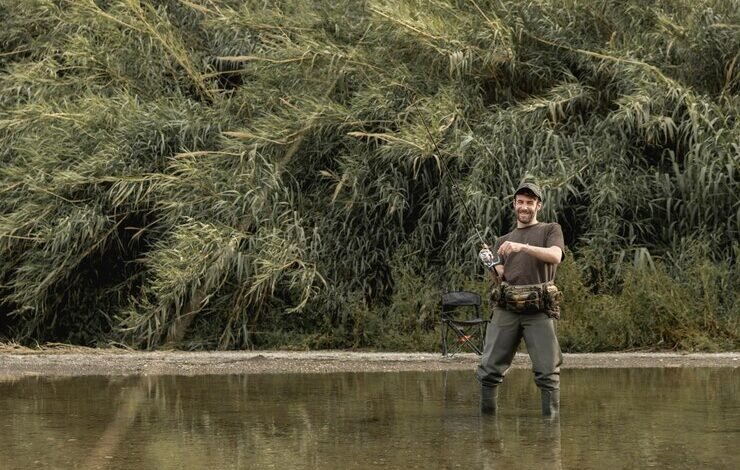Pirarucu: The Giant of the Amazon

The Pirarucu (Arapaima gigas) is one of the largest freshwater fish in the world, and its presence in the Amazon Basin has captivated the attention of scientists, fishermen, and food enthusiasts alike. Known by various names, including “arapaima” and “paiche,” the pirarucu is not only significant because of its impressive size but also for its cultural and economic importance to the communities that surround its natural habitat. This article delves into the biological characteristics, ecological significance, cultural impact, and conservation efforts surrounding this majestic fish.
Biological Characteristics of the Pirarucu
The pirarucu is a member of the Arapaimidae family, a unique species endemic to the Amazon Basin in South America. Reaching lengths of up to 15 feet and weighing as much as 485 pounds, it is often referred to as a “living fossil” because it has changed little in millions of years. Its sheer size and power make it a formidable presence in the waters of the Amazon River and its tributaries.
One of the most fascinating aspects of the pirarucu is its ability to breathe air. This giant fish has evolved to live in oxygen-poor water by developing a modified swim bladder that acts as a lung, allowing it to take in atmospheric oxygen. As a result, pirarucu must surface regularly to breathe, a trait that differentiates it from most other fish and aids in its survival in the sometimes-stagnant waters of the Amazon.
The pirarucu’s diet is another factor in its dominance of the ecosystem. It is a carnivorous fish, feeding primarily on smaller fish, crustaceans, and even birds when the opportunity arises. It uses a unique method to capture its prey by creating a powerful vacuum with its mouth, sucking in prey in an instant.
Ecological Significance
The pirarucu plays a vital role in the Amazon Basin’s complex ecosystem. Its position as a top predator helps to regulate the populations of smaller fish and other aquatic animals, ensuring a balance within the ecosystem. By controlling the numbers of various species, the pirarucu indirectly supports the health of aquatic vegetation and the overall biodiversity of the region.
The presence of pirarucu also influences the behaviors of other species. Smaller fish may adapt their spawning times and locations to avoid predation by these giants.
Given the interconnected nature of the Amazon’s ecosystem, the decline of pirarucu populations could have cascading effects on biodiversity.
Cultural and Economic Importance
For indigenous and local communities in the Amazon, the pirarucu is much more than just a fish—it’s a crucial part of their culture and economy. Historically, the fish has been an essential source of food for the people living in and around the Amazon Basin.
The fish’s skin and scales are used to make leather goods, jewelry, and crafts, contributing further to local economies.
Traditionally, fishing for pirarucu was done sustainably, with indigenous practices ensuring that populations remained healthy. However, overfishing and unsustainable harvesting methods have posed significant threats to the species in recent decades.
Conservation Challenges
These environmental changes, coupled with overfishing, have caused a steep decline in pirarucu populations in many parts of the Amazon.
The pirarucu’s reproductive cycle further complicates conservation efforts. Pirarucu are slow breeders, with females laying their eggs in the floodplains during the rainy season. The eggs are guarded by both parents, but the fry are highly vulnerable to predation and environmental changes.
Illegal fishing continues to be a major problem, with pirarucu often being caught before they have a chance to reproduce. Poaching remains an issue, even in protected areas, as the high market value of the fish incentivizes illegal activities.
Conservation Efforts
To address these challenges, a variety of conservation strategies have been implemented across the Amazon Basin. Community-based management programs have proven to be particularly effective, involving local populations in the monitoring and regulation of pirarucu fishing. These initiatives often work with indigenous knowledge, combining traditional practices with modern conservation techniques to create sustainable management plans.
Local fishers are trained to monitor these zones and ensure that the rules are followed. In exchange, they are given exclusive fishing rights in designated areas where pirarucu populations have been deemed sustainable.
International efforts have also played a role in the conservation of the pirarucu. This has helped to reduce illegal trade in pirarucu products and create more sustainable markets for the fish.
The Future of Pirarucu Conservation
While significant progress has been made in the conservation of pirarucu, ongoing challenges such as climate change, deforestation, and illegal fishing continue to threaten the species. The future of the pirarucu will depend on the continued cooperation between local communities, governments, and international organizations to ensure that conservation efforts are effective and adaptable to changing conditions.
By protecting the pirarucu, we are also safeguarding one of the most biodiverse and vital ecosystems on the planet.



